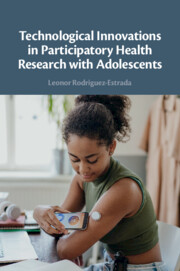Book contents
- Technological Innovations in Participatory Health Research with Adolescents
- Technological Innovations in Participatory Health Research with Adolescents
- Copyright page
- Epigraph
- Contents
- Figure
- Tables
- Introduction
- Chapter 1 Health Research with Adolescents
- Chapter 2 Methodological Considerations in Participatory Research with Adolescents
- Chapter 3 Safety and Ethics in Technological Participatory Health Research with Adolescents
- Chapter 4 Mobile Apps and Video Games
- Chapter 5 Sonification
- Chapter 6 Photovoice and Visual Methods
- Chapter 7 Videos and Animations
- Chapter 8 Visual Mapping
- Chapter 9 Internet-Based Participatory Research
- Chapter 10 ‘Meaningful’ Participation
- Chapter 11 Conclusions
- References
- Index
- References
References
Published online by Cambridge University Press: 20 February 2025
- Technological Innovations in Participatory Health Research with Adolescents
- Technological Innovations in Participatory Health Research with Adolescents
- Copyright page
- Epigraph
- Contents
- Figure
- Tables
- Introduction
- Chapter 1 Health Research with Adolescents
- Chapter 2 Methodological Considerations in Participatory Research with Adolescents
- Chapter 3 Safety and Ethics in Technological Participatory Health Research with Adolescents
- Chapter 4 Mobile Apps and Video Games
- Chapter 5 Sonification
- Chapter 6 Photovoice and Visual Methods
- Chapter 7 Videos and Animations
- Chapter 8 Visual Mapping
- Chapter 9 Internet-Based Participatory Research
- Chapter 10 ‘Meaningful’ Participation
- Chapter 11 Conclusions
- References
- Index
- References
- Type
- Chapter
- Information
- Publisher: Cambridge University PressPrint publication year: 2025

